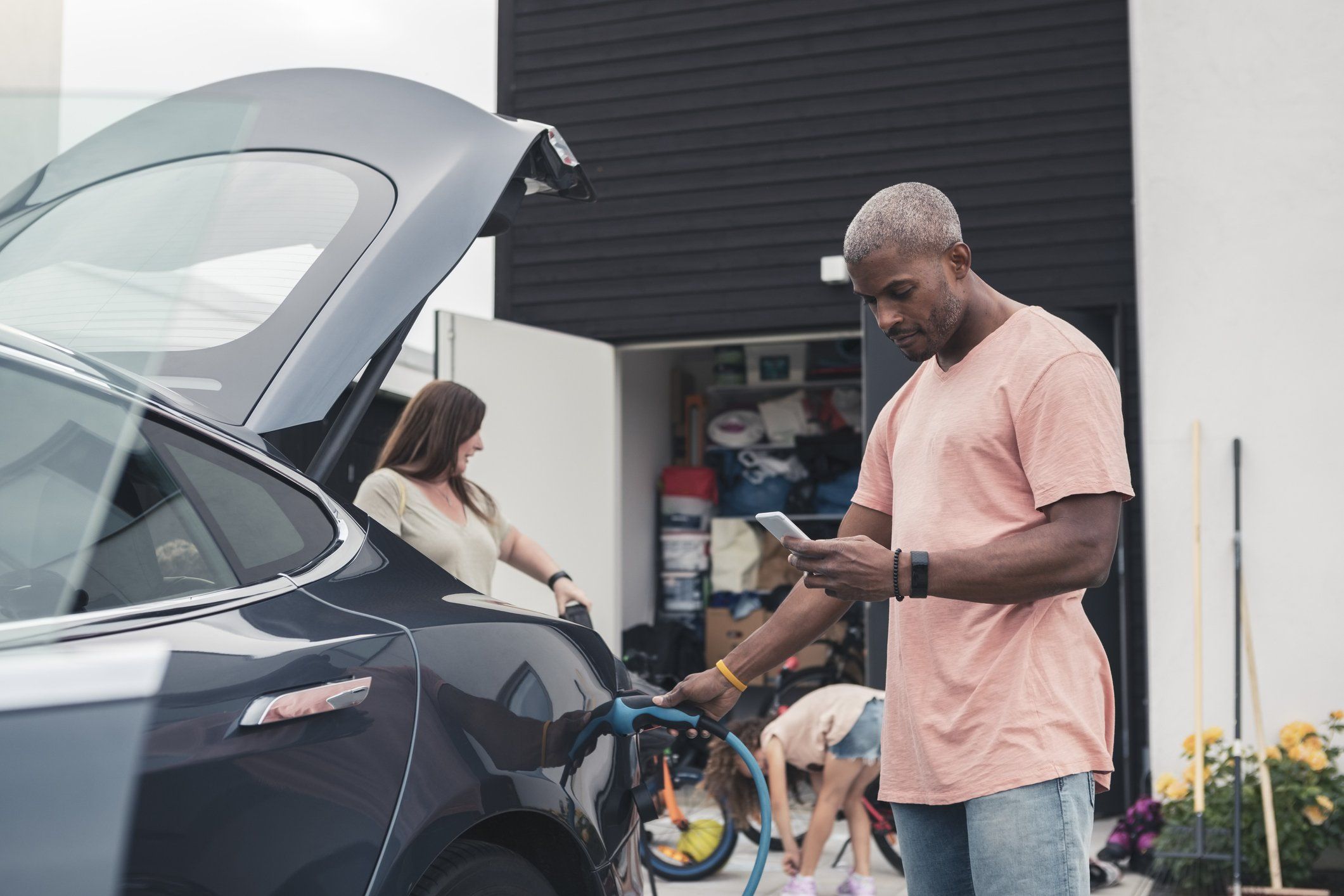guest column
Expert: 5 ways residential charging enhances the environmental benefits of EVs

This Earth Week, let's consider the benefits of home charging for electric vehicles. Photo via Getty Images
Electric vehicles are already considered as an environmentally conscientious alternative to traditional internal combustion engine vehicles, thanks to their zero tailpipe emissions. However, the environmental benefits of EVs can be further enhanced by implementing a home-base charging routine.
This is important not only for individuals looking to cut their household’s carbon footprint, but also for corporations that operate EV fleets and are looking for additional cost and environmental savings as part of their larger sustainability initiatives. What makes home charging the most eco-conscious option?
1. Increased use of renewable energy
More than 4 million homes in the United States support rooftop solar panels that provide renewable energy back to the property or back to the local grid. When EV owners install solar panels or other renewable energy systems at their homes, they can charge their vehicles using this clean energy, effectively reducing the carbon footprint associated with their EV use to nearly zero. This direct use of renewables circumvents the inefficiencies and emissions associated with the broader energy grid which, depending on the location, may still rely on fossil fuels to a significant extent. This synergy between EVs and clean local energy production is exemplified by Tesla’s solar roof program, which promotes the adoption of clean home-based energy production as part of the holistic EV ownership experience offered through their app.
2. Optimizing charging times for lower emissions
Home charging allows for more flexible and strategic charging schedules. EV owners can often take advantage of off-peak electricity rates and lower carbon intensity periods by charging their vehicles overnight or when renewable energy production (such as wind or solar power) is at its peak. This not only leads to cost savings for the consumer, but also contributes to a balanced demand on the electric grid, reducing the need for high-carbon emergency power sources that are sometimes activated during peak demand times. Apps like WhenToPlugIn use a carbon intensity forecasting tool to help consumers pick the best times to charge.
3. Reducing dependency on public charging infrastructure
Public charging stations are crucial for long-distance EV travel. For everyday use, the current public charging landscape is trailing the demand curve. The good news is that the majority of EV drivers can rely almost solely on home charging. This practice ensures public charging spots remain open for those who, due to circumstances such as residing in multi-unit dwellings without charging facilities, cannot charge at home. Consequently, this accessibility supports wider adoption of EVs, leading to a more substantial reduction in overall emissions.
4. Avoiding unnecessary travel to public charging stations
The average driver has to detour 2 miles to refill their gas tank. For electric vehicles, finding an available public charger can add many more miles to a trip. Home charging ensures that EVs can start each day with a “full tank” — which, with new EVs, means hundreds of miles of range before needing to plug in again. This reduction in driven miles not only saves time but also decreases the energy consumption and emissions associated with traveling to and from charging stations unnecessarily. By charging at home, EV owners can ensure their vehicles are ready to go without extra trips, further cutting down on the vehicle's overall environmental impact.
5. Enhancing battery longevity
Charging at home typically involves slower charging speeds compared to rapid chargers found in public stations. These slower, more controlled charging rates are less taxing on an EV's battery, contributing to longer battery life and better overall efficiency. Longer battery lifespans mean fewer replacements over the vehicle's life, significantly reducing the environmental impact associated with battery production and disposal. This not only has clear environmental benefits but also economic ones for the vehicle owner.
Conclusion
The environmental benefits of electric vehicles are well-documented, but by incorporating home charging, these benefits are amplified significantly. Through the increased use of renewable energy, optimizing charging times to utilize green power, and reducing reliance on public charging infrastructure, EV owners can further reduce their environmental footprint. As technology advances and the energy grid becomes cleaner, the potential for home charging to contribute to a more sustainable future only grows, reinforcing the role of electric vehicles in the transition to greener transportation options.
———
Kate L. Harrison is the co-founder and head of marketing at MoveEV, an AI-backed EV transition company that helps organizations convert fleet and employee-owned gas vehicles to electric, and reimburse for charging at home.